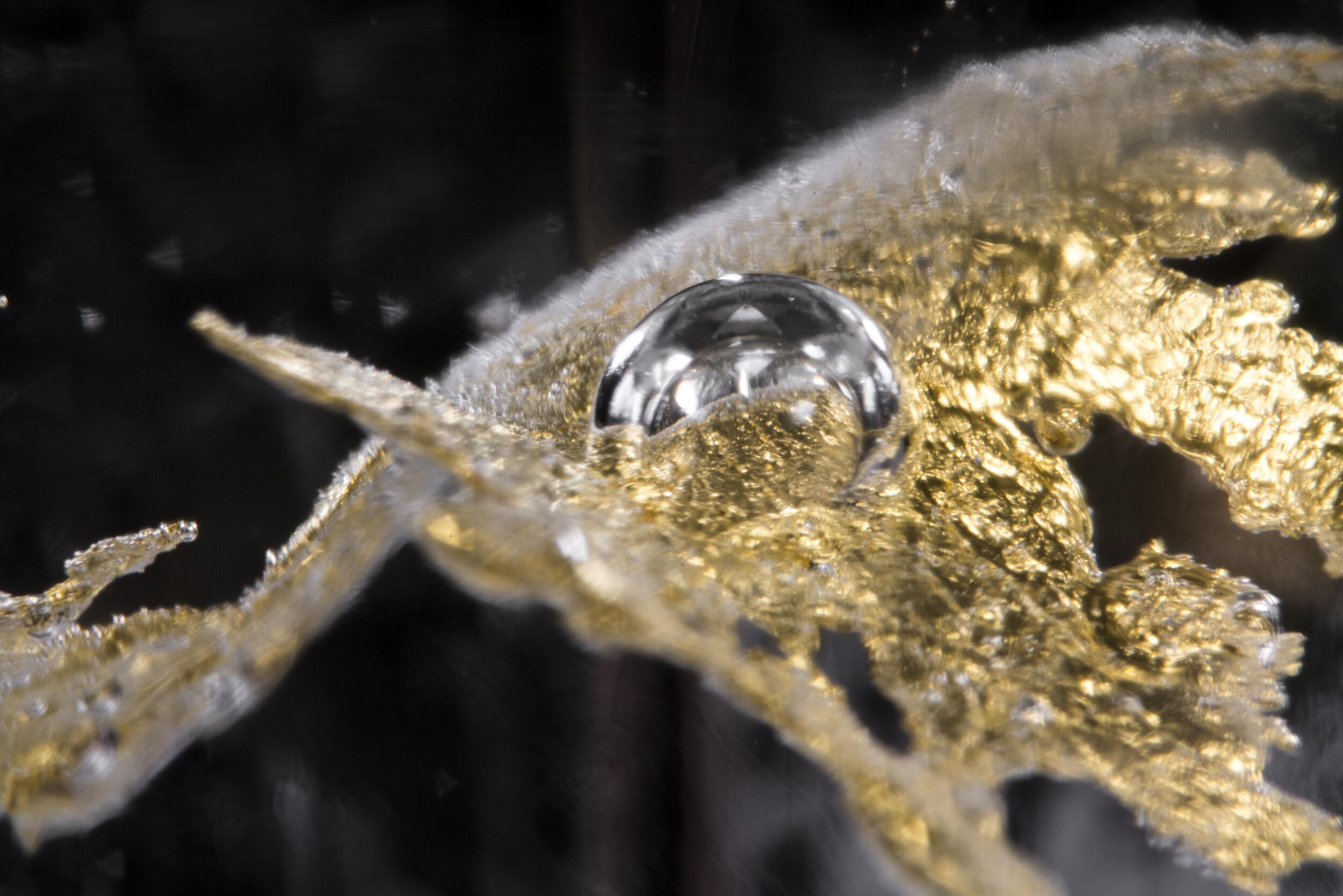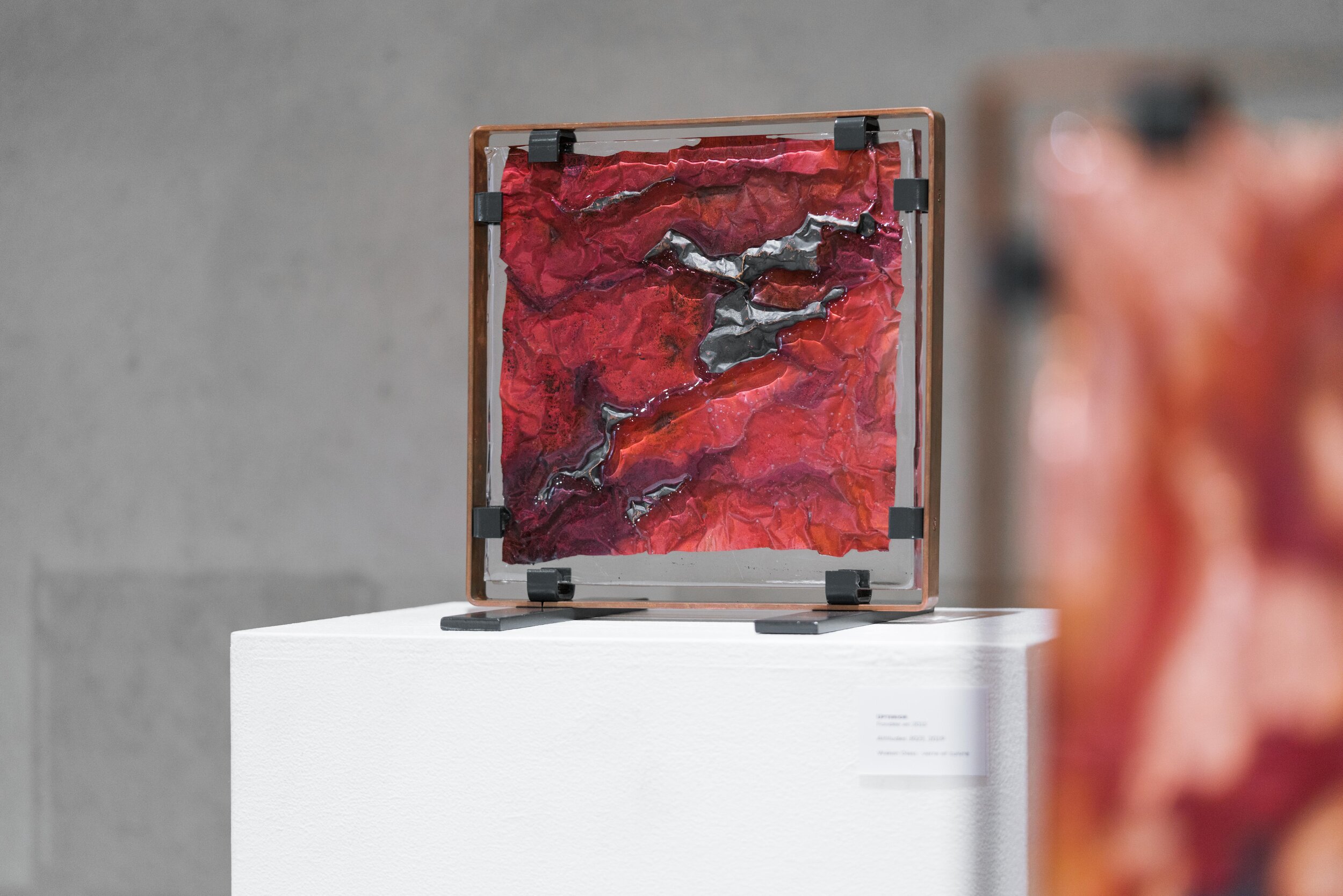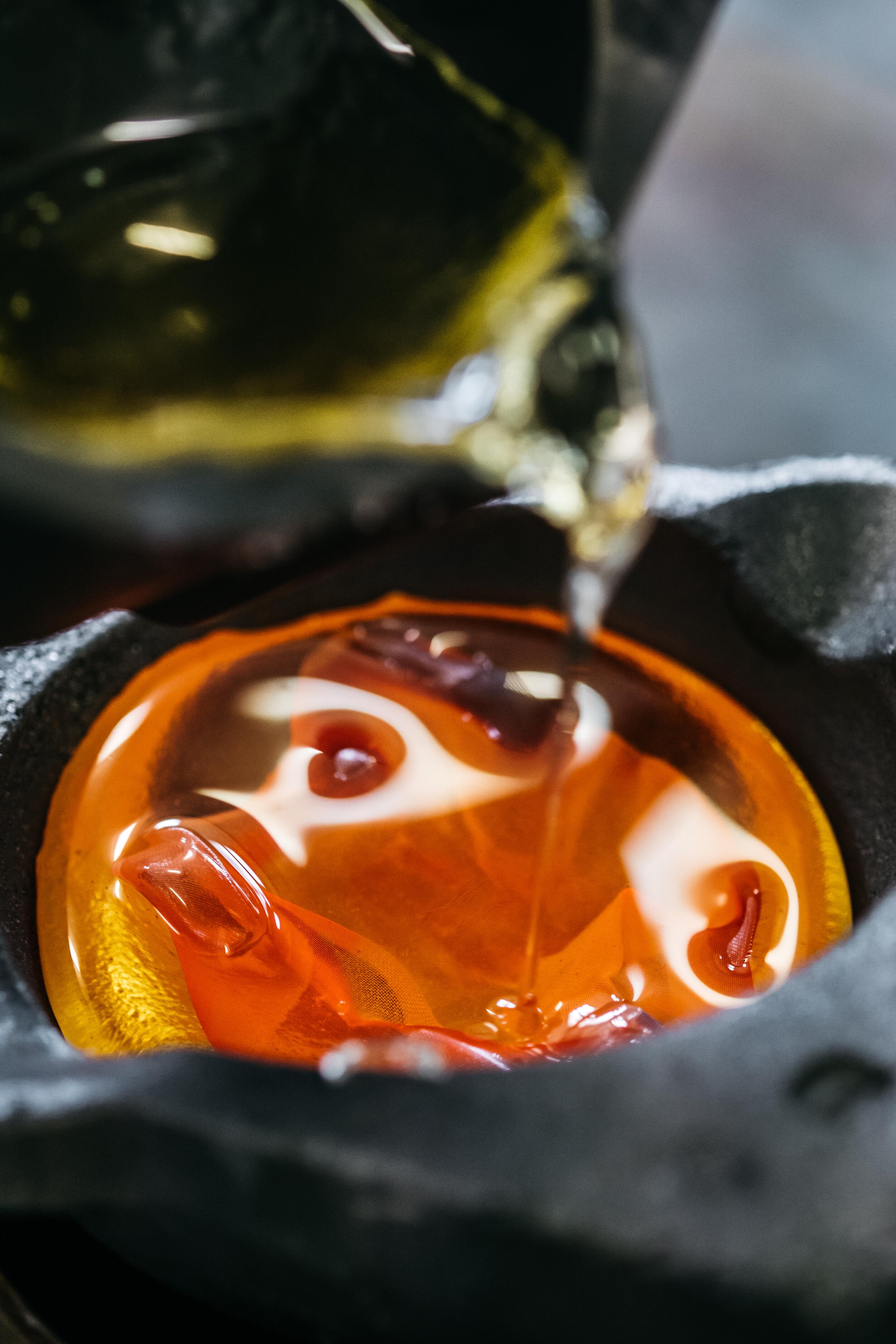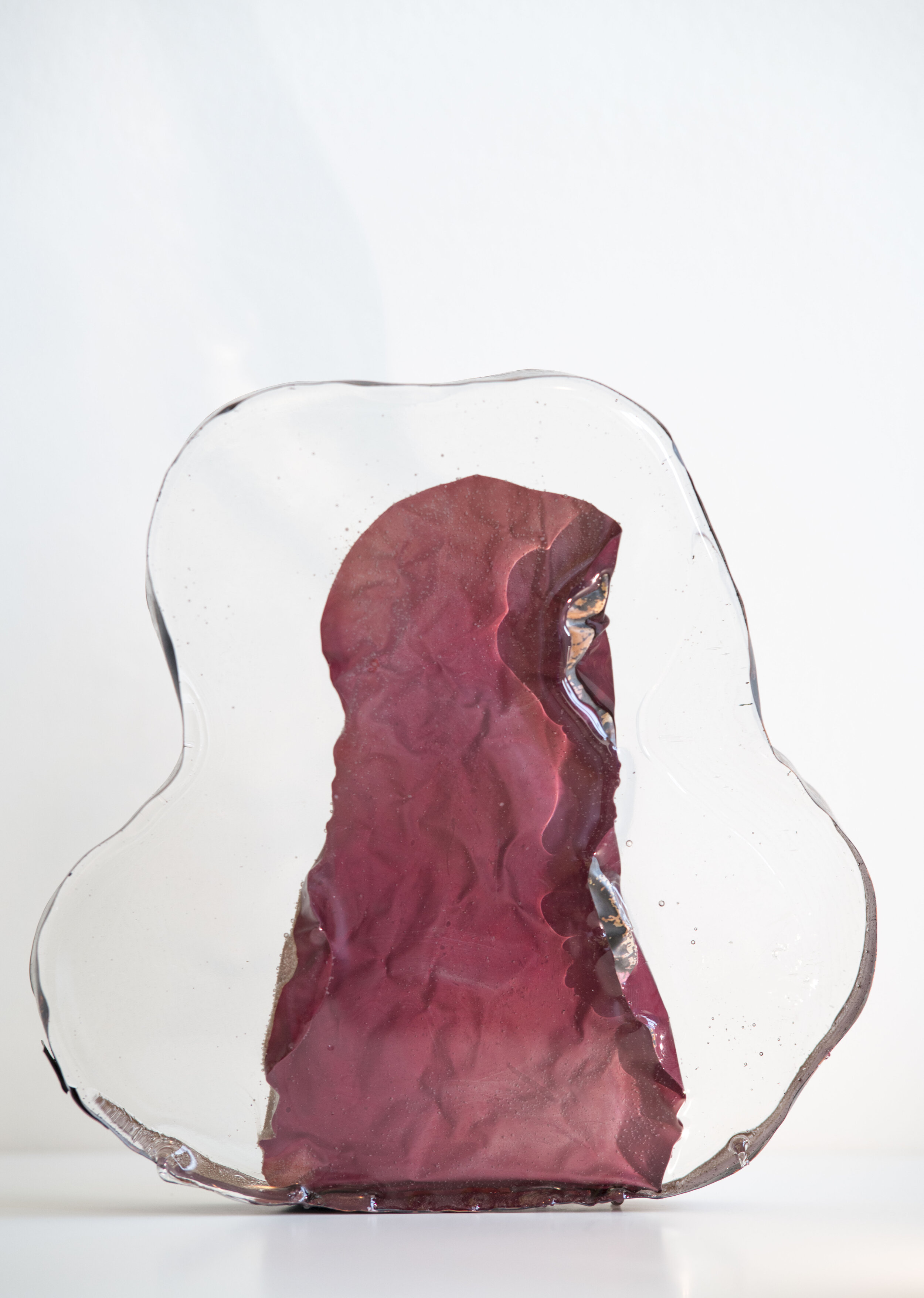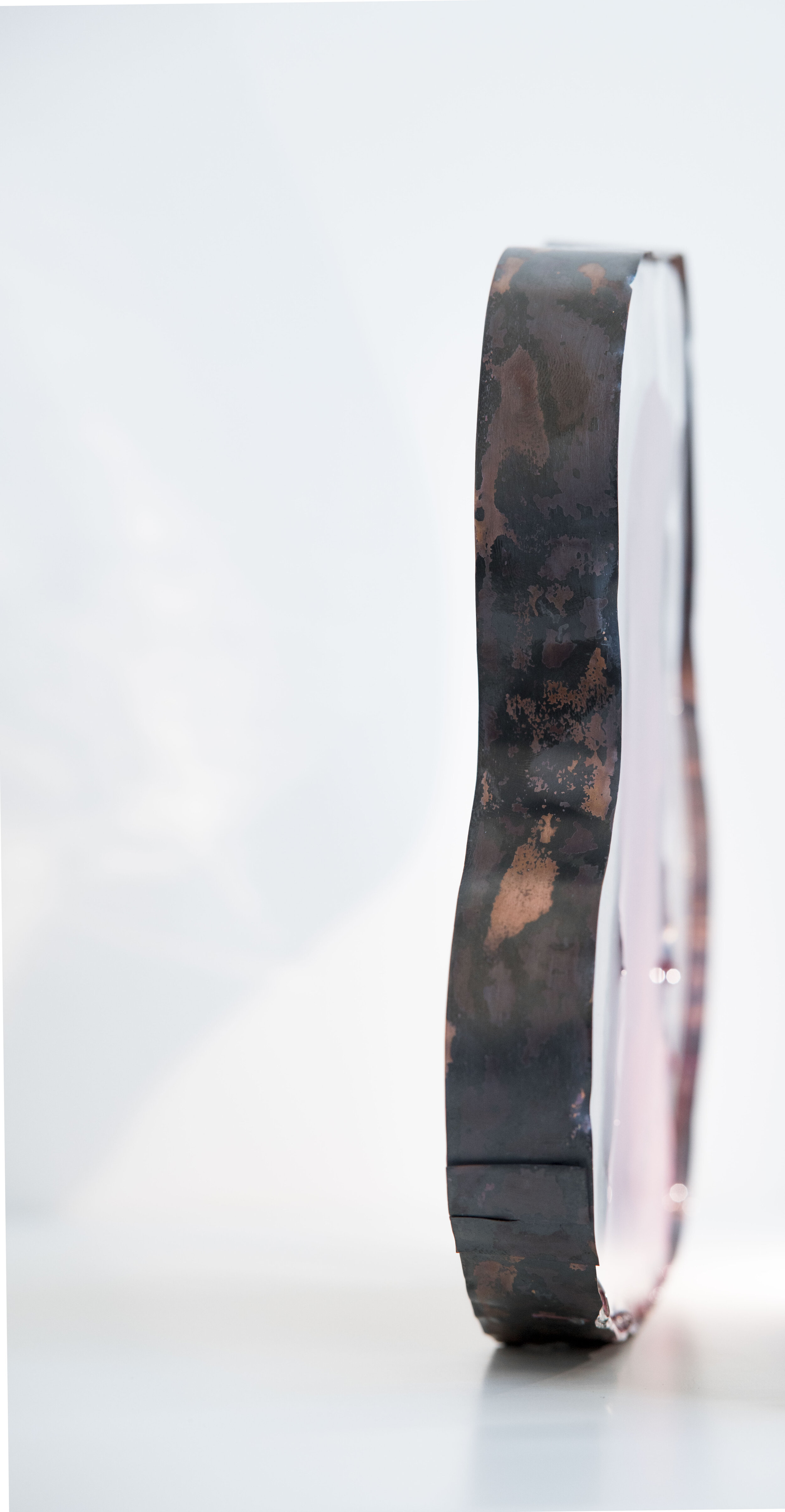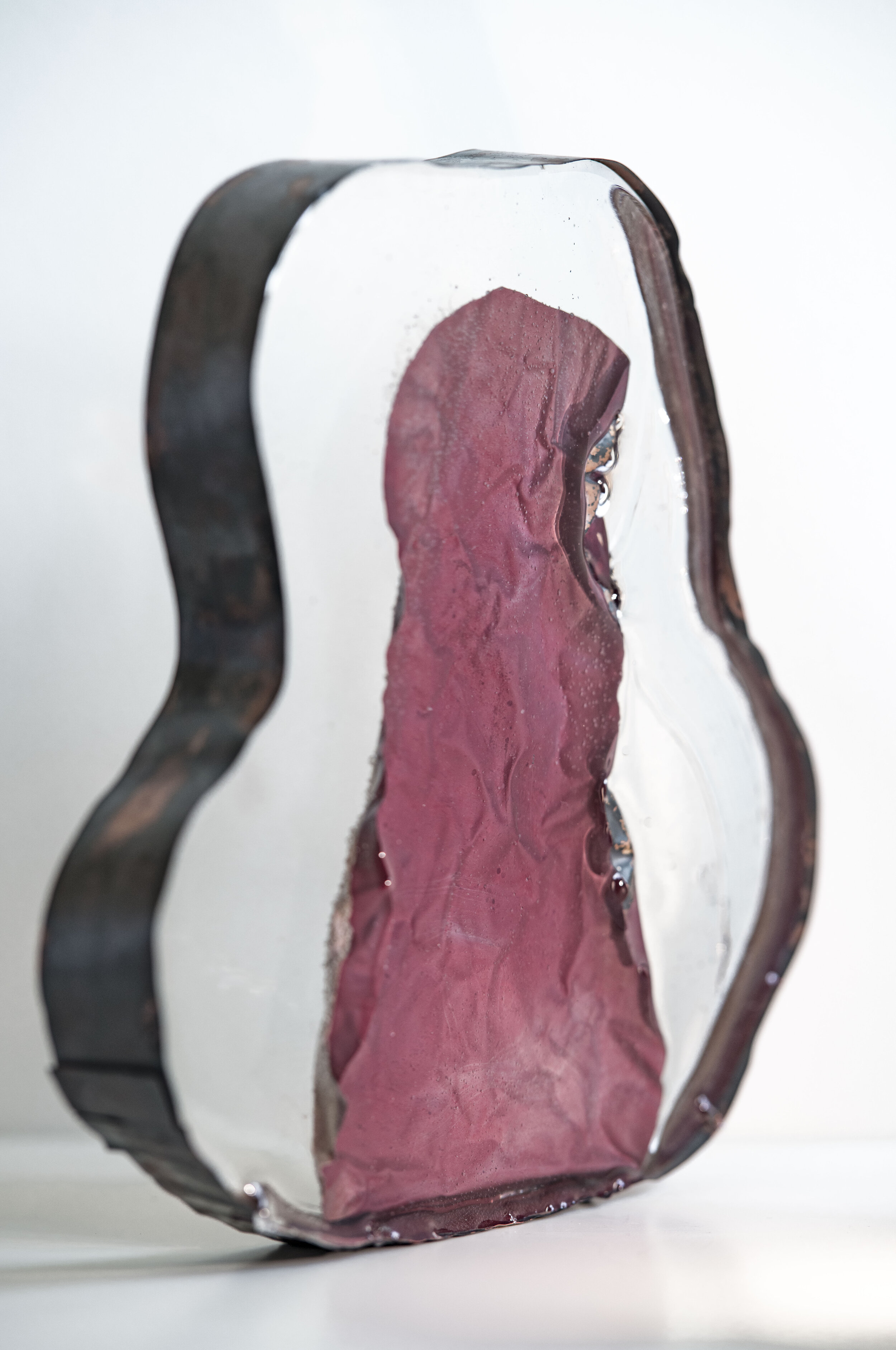Upterior

FORM sat down with Aga and Ania Zielinska, creators of Upterior, the innovative materials company behind Waken Glass. Upterior invents and invests into new materials that have the potential to enhance life. Together, FORM and Upterior created Augustine, a statement piece that combines material rediscovery and fresh creative perspective. Our piece coalesces earthen materials and their qualities - metal with its strength and glass with its perceived fragility - to reflect on womanhood and motherhood.
Tommaso Babucci: What is Upterior’s mission?
Upterior: At the core, we are interested in design and how spaces can impact people emotionally. We believe that good design can make somebody feel better. Materials play a crucial role in that. In our research of materials, we landed upon the concept of innovating glass, adding materials to it, creating a new paradigm.
T: Upterior has developed a new kind of material, Waken Glass. What is it and how does it work?
U: Waken Glass is a reinvention of traditional glass. It’s a new medium based on a new technology. We’ve developed it in-house, and it is patent pending. Briefly, Waken Glass is a method of combining metal and glass in a way that was not possible before. The technology and methodology opens up many new applications in art and design, both interior design and product design. For example, we are working on applications in lighting, watchmaking and jewelry. Having a material with such diverse applications really excites us.
T: I’ve never heard of glass mixed with solid materials. Why is it so special? And why is this so hard to do?
U: Every material has its own chemical and physical properties and behaves in a certain way, depending on the environment. Creating any type of composite material is about marrying two differently behaving things. That is very challenging in the physical world, because you have to convince the two materials to come together and behave in a similar enough way to actually coexist.
T: You’re able to blend copper and gold with glass. What does that look like?
U: Copper and gold were our first launches of Waken Glass. Copper is very dynamic — it responds to the surrounding environment, changes color based on temperature, and oxidizes with time. The way we work with copper embraces the dynamism of the colors and the aging of copper, which happen naturally. Once copper is inside glass, it doesn’t change anymore. Gold is also a metal, but it’s completely different. Gold is precious and fragile. We use 24 karat gold, which is especially fragile. But with glass we are able to “freeze” it, protecting its essence, enhancing its shine. And because of the properties of our glass, that gold gets magnified: the high index of refraction, combined with the clarity of the glass, make it seem like the whole piece is golden.
T: How did you get this idea?
U: Honestly, from the natural human response to somebody telling you that you can’t do something: doing it. So, when this question came to us, can you mix glass and metals, and the answer was no, it fueled us to try. Our core interest was in the link between materials and design and emotions.
T: I see how alive it feels, how organic it feels, how real it is. How have you used this material or want it to be used?
U: I think the range is really limitless. We like to share this material with designers and artists, let them be influenced and inspired by our creation. We also like to showcase the beauty of what we created, especially in applications with interior design, jewelry and watchmaking. Combining art, design, and technology fascinates us. The idea of having an aesthetic material being backed by rigorous science, is very interesting to the various industries.
T: Do you have some examples of the projects that you’ve been working on?
U: We had an enriching collaboration with artist Sara Ludy last year. Sara is a new media artist who works predominantly with digital art. But she was so fascinated with our material that she wanted to work with it. For the commercial side, an important property of this material is that, the technology allows for a limited edition series in which each piece is actually unique, because the interaction between metal and glass is wonderfully variable. We are using that property in two current projects, in lighting and in jewelry.
T: What is something you would love to see Waken Glass used for?
U: When you interact with this material on a daily basis, it comes in images while you sleep — it comes back to you. In those dreams, we imagine it in a big scale form — used in architecture with these large surfaces where you can actually almost be encompassed by this material and see its power.
T: And light changes this material, right?
U: What’s remarkable about Waken Glass is that it has a very high index of refraction. To the viewer, it looks like it glows on its own. Typically, with glass, we’re more used to looking through it like through a window, but this is completely different. We look inside the glass and at the glass, not through the glass.
T: Is there anything that you would want our readers to know that you have not had a chance to express yet?
U: We want to acknowledge that many minds have contributed to the success of this material, on both the scientific and artistic spectrums. It’s important to keep learning from people. It continues to be a conversation piece for us. We have developed a material; we have this amazing technology; now it’s about collaborations and conversations. Even this conversation and the project that we will be working on with FORM Magazine are part of the process.

